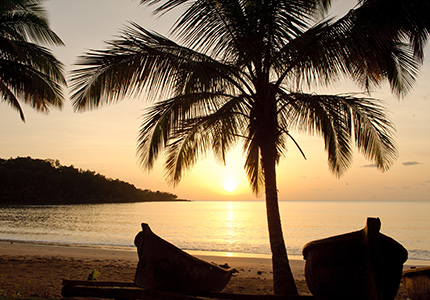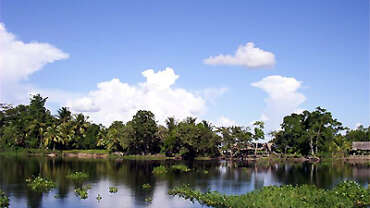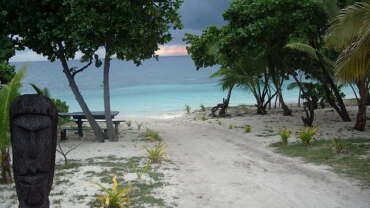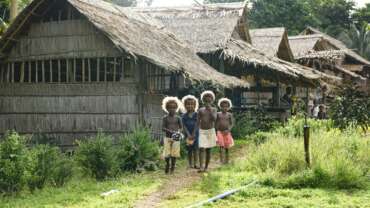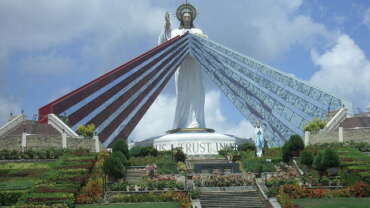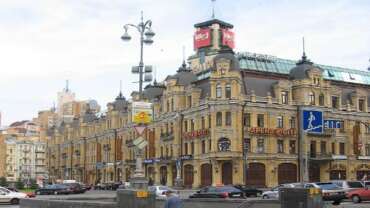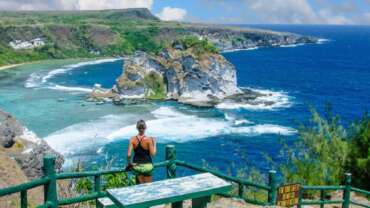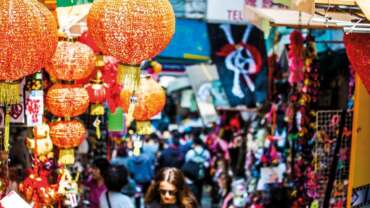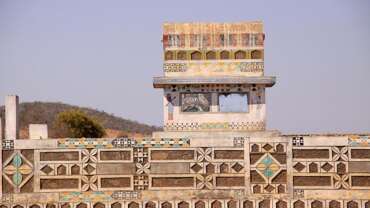Sao Tome and Principe - True tranquility
The second smallest country in Africa
The two islands of São Tomé and Príncipe form the second smallest country in Africa, a new tourist destination truly unique, directly in the African Ecuador. It is very easy to reach: The airport of the capital city São Tomé (TMS) is a six hour direct flight from Lisbon. There are additional connections to Ghana, Angola and Gabon. The island of São Tomé is about 50 km from North to South, while the island of Príncipe is only 16 km from North to South. Both islands are covered in dense tropical forest. mixed with cocoa, coconut and coffee plantations and hidden valleys where you can find dozens of endemic birds. The Atlantic Ocean offers warm and pleasant water all year round and has created one of the most fabulous and beautiful beaches in the whole world. True tranquility – São Tomé and Príncipe.
History of Sao Tome and Principe
Portuguese colonial rule
São Tomé and Príncipe were uninhabited when they were discovered, about 1470, by Portuguese navigators. In the late 15th century the Portuguese sent out settlers (including many convicts and Jewish children who had been separated from their parents and expelled from Portugal) and brought African slaves to the islands to grow sugar.
During the 16th century São Tomé was for a brief time the world’s largest producer of sugar, but the rise of Brazilian competition and the poor quality of São Tomé’s badly dried product virtually destroyed this industry. The economic decline was accentuated by social instability as slaves escaped to the mountains and raided the plantations. Amador, the self-proclaimed king of the slaves who nearly overran the whole island of São Tomé in 1595, is now regarded by many as a national hero. Foreign pirates were another hazard, and the Dutch briefly captured São Tomé in 1641, only to be expelled seven years later.
After the collapse of the sugar economy, the colony served as an entrepôt for the Portuguese slave trade to Brazil; the cargoes of small slave ships were transferred to larger vessels for the Atlantic voyage, and provisions such as water were obtained. The islanders produced food crops for these ships and for themselves. Because of the frequent political unrest in São Tomé, the capital was moved in 1753 to Santo António on Príncipe, whose harbour was the site of much activity. In 1778 the Portuguese ceded the islands of Fernando Pó (Bioko) and Annobón (Pagalu), on either side of Sao Tome and Principe, to the Spaniards, who wished to develop their own African slave trade.
The independence of Brazil in 1822, the suppression of the slave trade in the Portuguese territories, and the introduction of coffee and cacao (the source of cocoa beans) cultivation in the 19th century shifted the economic centre of gravity back to São Tomé, and in 1852 São Tomé city once again became the capital. Cacao replaced coffee as the main cash crop in the 1890s, and during the first two decades of the 20th century the colony was in some years the world’s largest producer of the commodity. This led to the maximum expansion of the plantations on the islands. When slavery was legally abolished in 1875, the Portuguese recruited contract workers from such places as Angola, Cape Verde, and Mozambique. However, until 1910 the living and working conditions of these indentured labourers often were little different from slavery.
Cocoa production fell after World War I, and the islands became isolated and notorious for the brutality and corruption that reigned on the plantations belonging to absentee planters and corporations. Attempts to force the local Forros to work on the plantations led to the Batepá Massacre in 1953, an event later often cited by São Toméans in their demands for independence as an example of the violence under Portuguese rule. The Committee for the Liberation of Sao Tome and Principe was set up in exile in 1960; it changed its name to the Movement for the Liberation of Sao Tome and Principe (MLSTP) in 1972. However, it consisted of only a small group of exiles, who were unable to mount a guerrilla challenge to the Portuguese on the islands.
The government that took power in Portugal after a coup in 1974 agreed to hand over power to the MLSTP in 1975, and virtually all Portuguese colonists fled to Portugal, fearing an independent black and communist government. Independence was granted on July 12, 1975.
After independence
The country’s first president, Manuel Pinto da Costa of the MLSTP, was elected in 1975. The government initially followed eastern European models of political and economic organization. Economic decline and popular dissatisfaction, however, led to a process of liberalization that started in 1985 and culminated in the establishment of a multiparty democracy in 1990.
Pinto da Costa was succeeded in 1991 by Miguel Trovoada, a former prime minister who ran for the presidency unopposed in the first free elections in the country’s history. In August 1995 Trovoada was deposed in a bloodless coup orchestrated by the military. However, coup leaders reconsidered their demands when faced with the immediate threat of the loss of foreign aid, and Trovoada was reinstated as president a week later.
Trovoada was reelected in 1996 but was barred from seeking a third term in the 2001 election. He was succeeded by businessman Fradique de Menezes of the Independent Democratic Action (ADI), the party with which Trovoada had been affiliated since 1994. Within months of de Menezes’s election, a power struggle erupted between the new president and the MLSTP-dominated National Assembly, establishing a pattern of political conflict that continued for some time. In 2003 de Menezes was deposed in a military coup, but international negotiations were successful in guaranteeing his reinstatement on the condition that the coup leaders would not be punished for their actions. De Menezes was reelected in 2006, representing the Democratic Movement of Forces for Change, the party that had splinted off from the ADI in late 2001.
People of Sao Tome and Principe
Ethnic groups
The population consists mainly of Forros (from forro, Portuguese for “free man”), descendants of immigrant Europeans and African slaves. Another group, the Angolares, descended from runaway Angolan slaves who were shipwrecked on São Tomé about 1540. The Angolares remained apart in the isolated southern zone of São Tomé island until the late 19th century, but they later spread throughout the country and became largely assimilated. Cape Verdeans form the largest group of resident foreigners; many have adopted São Toméan nationality. Angolans and Mozambicans make up most of the rest of the African immigrant community. Like the Cape Verdeans, they are relatively well integrated with the other islanders, because of a shared Luso-African cultural background. There is a small European population—primarily Portuguese—in the country.
Languages
Standard Portuguese is the official language and is understood by virtually all islanders. In addition, three Portuguese-based creoles are spoken: Sãotomense, spoken by the Forros and having by far the largest number of speakers; Angolar, the language of the Angolares, spoken on the southern tip of São Tomé; and Principense, spoken by only a few hundred individuals on Príncipe.
Religion
More than half of the population belongs to the Roman Catholic Church. The remainder of those professing a religious affiliation is primarily Protestant. Traditional African religious practices and beliefs are widespread, even among adherents of other faiths. More than one-fifth of the population identifies as nonreligious.
Cultural Life of Sao Tome and Principe
Cultural milieu
This small country has a homogeneous creole culture, profoundly marked by centuries of blending elements of the dominant Roman Catholic Portuguese culture with various African influences. The kinship system is bilateral, although men traditionally have been polygynous. With the virtual absence of monogamous marriage, the conjugal system is characterized by a high incidence of multiple and serial customary unions and visiting relationships; as a result, about one-third of households are headed by females. Despite more than 500 years of Roman Catholicism, local practices have been restricted largely to baptism and a few rites, such as processions and funerals. Various traditional African practices and beliefs have always coexisted with Roman Catholicism.
The lexicon of the three local creole languages is predominantly derived from Portuguese, whereas their phonology and syntax stem from African languages. Many African elements have been adopted in the cooking, customs, and beliefs of much of the population, and most people of lower socioeconomic status speak only creole in daily life. Famous examples of cultural creolization are the plays The Tragic Story of the Marquis of Mântua and Emperor Charlemagne (known as Tchiloli on São Tomé island) and Auto da Floripes, popular on Príncipe island, both of which are based on 16th-century Portuguese dramas.
Sports and recreation
Football (soccer) has always been the most popular sport in the country. The first local association was founded in 1931, and a national federation was created in 1977, two years after independence. In the late 1990s the country contained some two dozen clubs competing in two divisions. The clubs of the first division compete annually for the national championship, and there is also a national cup competition. Local competitions comprising all existing sports are held annually on March 12, the National Sports Festival Day. Sao Tome and Principe first participated in the Olympic Games in 1996, when the Summer Games were held in Atlanta.
A pearl in the Atlantic
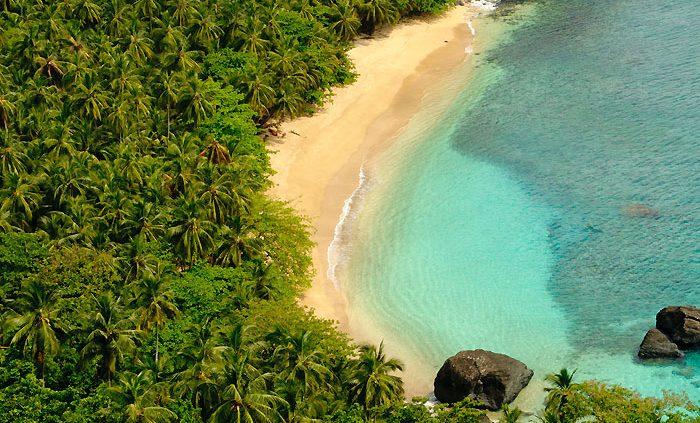
1001 square meters (about 40% of the Lisbon District area) of adventure, walking, discovering, swimming, diving and relaxing.
São Tome e Príncipe, which was named by Lonely Planet as one of the top 10 tourist destinations , is a small country of islands, located about 300 km in front of the Central African coast. The population is friendly and calm and is of African, Creole and Portuguese origin. The spoken language is Portuguese. The country has been independent since 1975. The capital city is São Tomé and the district around it is home to about 90% of the country’s total population of 200,000 people. Therefore, the most distant areas offer truly unique experiences. On the island of Príncipeless than 9 thousand people live. Its capital city is Santo António, a friendly village that can easily be crossed on foot in a few minutes. São Tomé and Príncipe is a democratic country. We are proud to be constantly among the African countries with the best rates of democracy and press freedom. Our people are nice, friendly, open and like to show the country.



